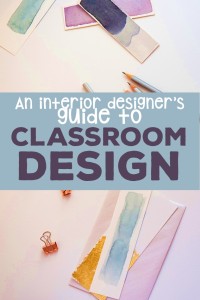 Before I was a math teacher, I was an Interior Designer. When I became a teacher, many people thought I would have a beautiful classroom, but it was not realistic for me then. I did not have the time (or budget) to create a color-coordinated, themed, Pinterest-worthy classroom.
Before I was a math teacher, I was an Interior Designer. When I became a teacher, many people thought I would have a beautiful classroom, but it was not realistic for me then. I did not have the time (or budget) to create a color-coordinated, themed, Pinterest-worthy classroom.
I admire teachers who create beautiful classrooms. Dedicating time, effort, and often our own money to create a welcoming atmosphere is just one way we can show students we care about them. However, I do not believe a classroom has to be expertly designed to be welcoming and functional.
If you are overwhelmed with the idea of decorating or unsure if you should hang something in your room, ask yourself: Is this a resource? When you use your walls as a resource, you will get the most benefit from your decorations.
Ways to use your walls as a resource in a math classroom:
 Hang a vertical number line. One of the first things I made for my middle school math classroom was a number line that I painted on a long strip of banner paper. I had it laminated, and I still have it. I painted the numbers on a diagonal, thinking I might hang it vertically for part of the year and horizontally for part of the year. I ended up leaving it vertical.
Hang a vertical number line. One of the first things I made for my middle school math classroom was a number line that I painted on a long strip of banner paper. I had it laminated, and I still have it. I painted the numbers on a diagonal, thinking I might hang it vertically for part of the year and horizontally for part of the year. I ended up leaving it vertical.
If you teach math, I highly recommend hanging a vertical number line. I refer to mine at least a couple times every week. It is useful for adding and subtracting integers, estimating value likes roots and irrational numbers, rounding, and the list goes on and on. I love having a large number line that I can point to when explaining concepts. And, vertical just makes sense. Kids understand up and down much better than left and right when discussing values. Download one here.
Use word walls and math posters strategically. Most math classrooms have at least a few math-related posters or vocabulary words on the wall, but are they useful? When I first had a word wall, I had it because it seemed like a popular thing to have. However, I did not use it. Simply hanging words on the wall did not help my students learn the definitions. (I should have known that!)
When deciding on word walls or reference posters, make a plan for how you will use them. Make sure the students interact with these resources. When I taught high school geometry, my students had a difficult time learning the vocabulary for all the types of angles associated with parallel lines cut by a transversal. After they asked me for the hundredth time what a certain angle was called, I hung reference posters on the wall. Afterwards, I did not need to tell them; they could study the posters and figure it out themselves.
Start each day with a math calendar. I made my first math calendar by cutting cardstock and painting math problems for each day. It got students’ attention from day one. They were not sure how to work all the problems yet, but they were intrigued.
Now I have created several math calendar versions appropriate for a wide range of grade levels. Teachers use them in different ways. Some start the day by referring to the problem for the day. Some have only the day’s problem posted, so when a student asks the date, they refer to the math problem.
Spread math into the hallways. Many school hallways seem to have a few bulletin boards that go unchanged for long periods of time. Students notice things in the hallway, especially if they have to wait in the hallway for any period of time. If you have the opportunity, ask if you can decorate a bulletin board in the hall. I have created a couple print-and-go designs that are appropriate for the whole school but also sneak in some math!

Hang student work. I believe this is truly the best decoration. Kids, no matter the age, love to see their work on the wall in your room.
Those are my best tips from an Interior-Design-turned-Math-Teacher. I hope you are not disappointed that I did not discuss the latest trends and themes. Choose a theme that makes you happy, or choose to keep it simple without a theme. Choose decorations that support learning, and you can’t go wrong.
Thank you for reading my blog, and I hope you have a great start to the school year!
– Rachael
Below are additional resources referenced in this post:
Be sure to visit these other STEM blogs in our blog hop to ready your classroom for the new year!
Read on to ready your classroom:
Set High Expectations on Day One
How to Manage Your Calculators
How to Create Meaningful Anchor Charts to Decorate your Classroom with a Purpose
Back-to-School Checklist for Teachers


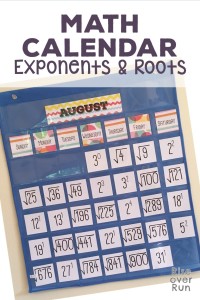
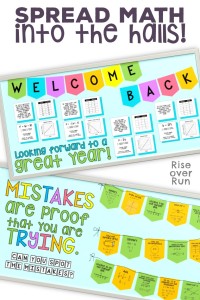



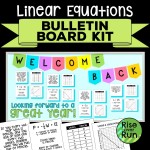

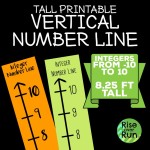

Love all of your tips! Your math calendars are awesome – great way to capture students attention
LikeLike
Thank you for this! I feel like I can’t keep up with everyone else and their cute rooms. I’m overwhelmed! I needed this read ♥️
LikeLike
Love these tips, thanks for the giveaway!
LikeLike
Thanks for the tips. I use painters tape to hang laminated letters. This allows to to make sure everything is level and spaced evenly.
Kimberly (simplyacuteideas)
LikeLike
I use electrical tape on a white board to make a daily schedule for my classes. Works well for my autistic students.
LikeLike
You are so right about thinking twice about whether the things we put up are actually useful or not! I need to be better about this.
LikeLike
Student work really is the best way to decorate. And some have my most fun and interesting lessons come from me trying to find something nice to hang on my walls. I’m not naturally artistic, but branching out into more aesthetically pleasing assignments always engages students in a different way than I normally think to.
LikeLike
Thank you for your feedback and for entering the giveaway! And you have won a math calendar and bulletin board kit of your choice. Please email me at rise.over.run.tpt@gmail.com, and I will send your prizes to you.
LikeLike
Displaying the kids’ work is a wonderful way to decorate. You and the student are full of pride!
LikeLike